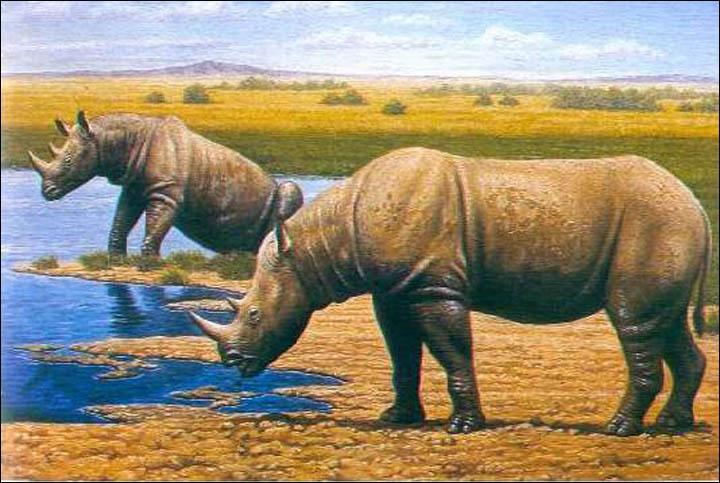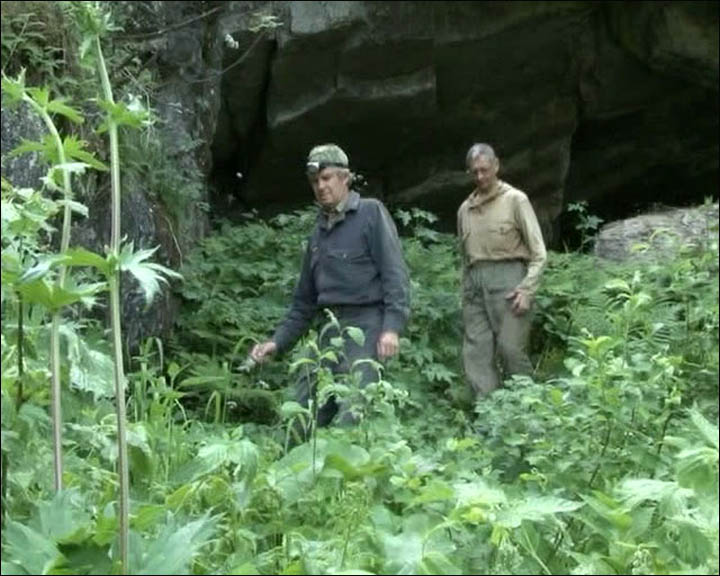A mysterious cave is giving up its pre-historic secrets to scientists and could 'change our view' of the Earth's climate.

Scientist Pavel Kosintsev said: 'Previously it was thought that
Merck's rhinoceros were heat-loving animals. Scientists thought that
hundreds of thousands of years ago, they lived only in Europe. Now it is
proved that 100,000 to 120,000 years ago, they were living in the
Urals'. Picture: Vesti.ru
For more than 120,000 years, animals have been drawn to this place,
evidently seeking warmth. It is also where predators brought their
kills, and remains of their bones prove it, say experts. Literally
thousands of bones have been found, it is reported, with analysis only
at an early stage following a two week excavation. There is believed to
be a strong possibility of further discoveries.The most exciting find so far is said to be part of the jaw of an ancient - and extinct - heat-loving rhinoceros, now undergoing detailed laboratory analysis.
Also known as Stephanorhinus, it is was a genus of large rhinoceros with two horns that was native to northern Eurasia during the Lower to Early Late Pleistocene epoch. Like other creatures, it perhaps took refuge from the cold in this cave on the border between the regions of Chelyabinsk and the Republic of Bashkortostan.
An intriguing report by Vesti.ru claimed that 'archaeologists made a discovery that could change the view of the distant past of our planet.
'In one of the caves was discovered the remains of an ancient rhinoceros that lived about 120,000 years ago - and, as previously thought, never inhabited in the Urals.
'Experts are sure that this discovery will provide answers to many questions about the Earth's climate - and not only in the past but in the future. Teeth were also found, in particular - bison, bear, as well as fragments of teeth of Merck's rhinoceros'.


The exact location and name of the cave is being kept secret by scientists for 'security reasons'. Pictures: Vesti.ru
Scientist Pavel Kosintsev said: 'Previously it was thought that
Merck's rhinoceros were heat-loving animals. Scientists thought that
hundreds of thousands of years ago, they lived only in Europe. Now it is
proved that 100,000 to 120,000 years ago, they were living in the
Urals'.Vesti stated: 'Excavations were carried out in a cave on the border of the Chelyabinsk Region and the Republic of Bashkortostan. Thousands of fragments of bones were found. This is a wealth of material for research. For thousands of years, there lived ancient predators - cave bears and lions. They dragged the prey into the lair. And since the cave was always dry, bones, in thick layers of soil is preserved in good condition to this day.'
Unfortunately, the reports do not quote scientists in detail but say that their 'sensational conclusion' is that the climate in the Urals up to 150,000 years ago 'was much warmer than previously thought'.
The exact location and name of the cave is being kept secret by scientists for 'security reasons'.
'Archaeologists expect to go back next summer and continue excavations'.
No comments:
Post a Comment